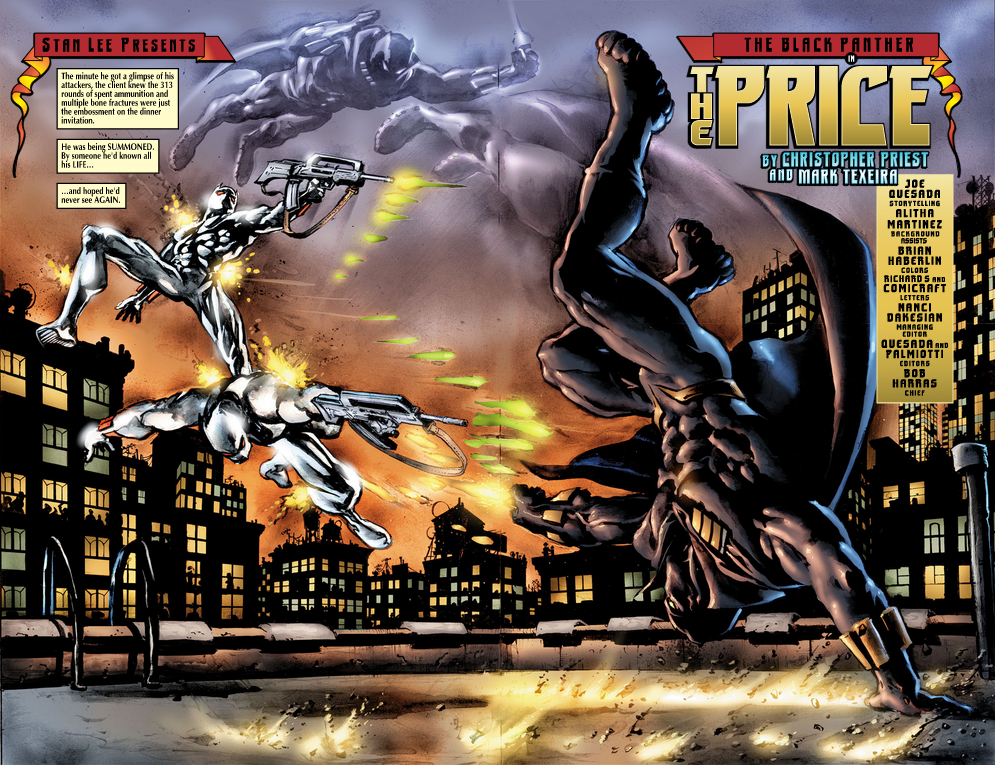
Christopher Priest, aka Jim Owsley, aka the first black Marvel editor in history, takes over Black Panther at a time that was probably the absolute nadir for both T’Challa and Marvel in general. Perhaps due to the fact that Marvel editorial had basically given up, Priest is given free reign. Aside from a brief appearance in Kurt Busiek’s “Avengers Forever” miniseries, Black Panther only appears here during this time period.

The result? This is the definitive modern run on Black Panther—and probably the one best regarded among fans and critics. It relied heavily on the best previous depictions of the character, Lee and Kirby’s work in Fantastic Four and Don MacGregor’s brilliant Jungle Action extended storylines. And because it was a Marvel Knight book, it could take a darker, more pseudorealistic approach.
As for the story itself, you probably won’t remember it a few weeks after you read it. But the tone, the characterizations, and the overall look will stay with you. Priest’s Panther is as smooth as Shaft and as charismatic as Lawrence Fishburne in Boyz N Tha Hood.
Now about that story…It starts with a narrator, Everett K. Ross, a U.S. State Department handler assigned to T’Challa. When we meet him, he’s sitting on a toilet being terrorized by a rat.

The tale then moves Black Panther to a forced choice: Allegiance to his role as a hero versus doing what is best for his country (and of course there’s a revolution again because that’s true in all Panther stories). Oh, and Mephisto. The devil menaces and manipulates Black Panther through the first four issues until we learn that Panther had the upper hand all along: Using his Wakandan scientists, Panther has figured out how to take on Mephisto and…

…Rip out his heart. Turning the tables on the usual power dynamic with MephistoPanther then forces Mephisto into an agreement–using his own manipulative manners against him.
The story ends with Panther in exile but peace in Wakanda as T’Challa’s stepmother shares the throne with anti-T’Challa forces led by Achebe–a new political foe for the Panther group. At least that’s what we are led to believe, until we see the seeds of portrayal on the last page of issue #5…

The prescience of titling that page “The Art of the Deal” decades before Donald Trump’s presidency is genius.
This story introduces Achebe, but more importantly it gives us Okoye and Nakia, both part of the Dora Milaje–the all-female Wakandan bodyguard squad.
And the spear-wielding Panther loyalist Zuri.

Also of note: During this story, Black Panther’s adopted brother, the White Wolf, attempts to assist T’Challa in quelling the coup–but would do so more violently than Panther will allow–leading to some harsh words.

